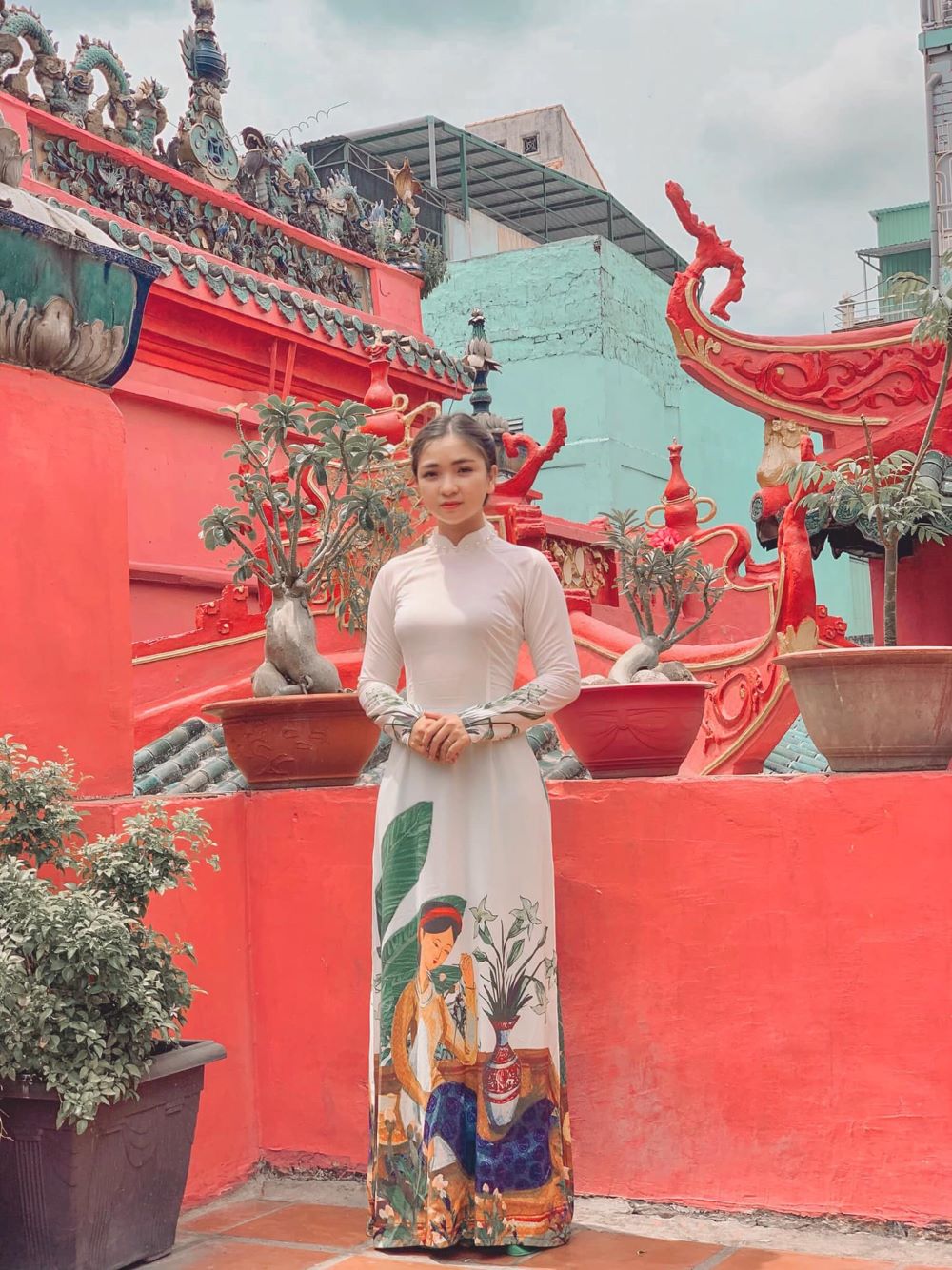
10 Exciting Check-In Spots in HCM City : Vietnam Travel Guide 2024 Updates
Contents
- 1 Starlight Bridge (Cầu Ánh Sao):
- 2 Ba Son Bridge (Cầu Ba Son):
- 3 Jade Emperor Pagoda (Chùa Ngọc Hoàng):
- 4 Thu Ngu Flagpole (Cột Cờ Thủ Ngữ):
- 5 Nguyen Hue Walking Street (Phố Đi Bộ Nguyễn Huệ):
- 6 Bach Dang Wharf – Saigon Waterbus (Bến Bạch Đằng):
- 7 Hao Si Phuong Alley (Hào Sĩ Phường):
- 8 Turtle Lake (Hồ Con Rùa)
- 9 Le Minh Xuan Incense Making Village (Làng Lê Minh Xuân)
- 10 Ho Chi Minh City People’s Committee (UBND TP Hồ Chí Minh)
- 11 Conclusion for 10 Exciting Spots in HCM City 2024 Updates:
The 10 exciting check-in spots in HCM City recently announced by the Department of Tourism are suggestions for tourists when visiting the city in 2024.
Welcome to Ho Chi Minh City, a vibrant metropolis that seamlessly blends rich history, dynamic landscapes, and modern charm. As a travel guide, I invite you to embark on a journey through the heart of this bustling city, exploring 10 exciting check-in spots in HCM City that encapsulate the essence of Ho Chi Minh City’s culture and heritage.
Starlight Bridge (Cầu Ánh Sao):
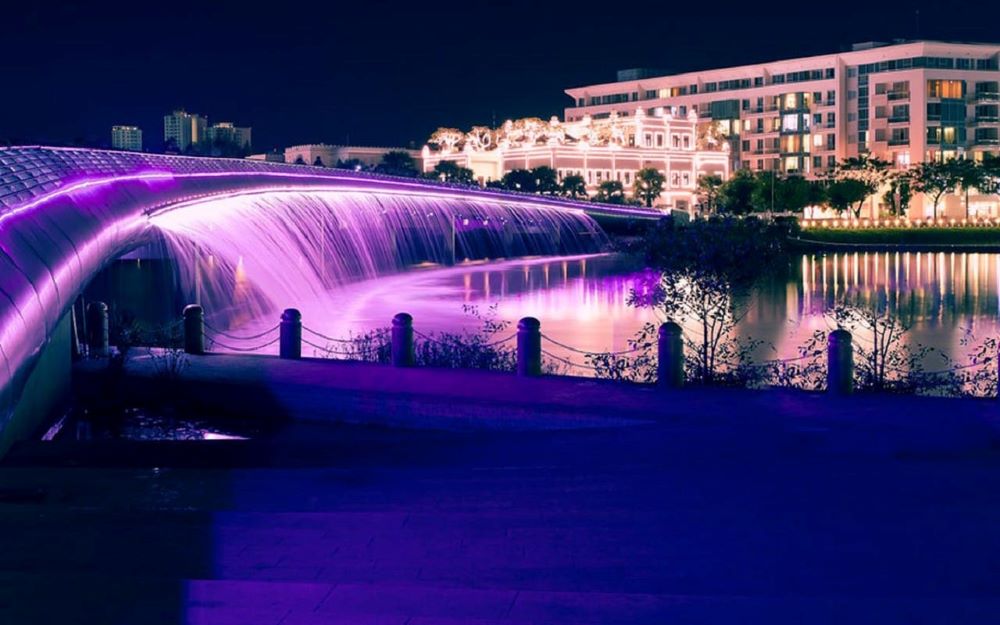
The Anh Sao pedestrian bridge, situated within the picturesque Canh Doi park in District 7, elegantly extends across the Thay Tieu canal, establishing a seamless connection between the enchanting Crescent Lake Area and the serene Dao Canal Area. Distinguished by its appellation, the Starlight Bridge derives its name from the distinctive design embellishing its surface – a captivating array of inverted LED lights.
Complementing this luminous display, the Starlight Bridge boasts a sophisticated water spray system flanked by a spectrum of seven-color lights that undergo a mesmerizing, perpetual transformation. This dynamic ambiance imparts an ethereal sensation to pedestrians, akin to strolling amidst a celestial expanse of thousands of stars.
As the sun begins its descent, the bridge transforms into a scenic promenade, providing an idyllic setting for leisurely walks and sunset appreciation. As the clock strikes 6:00 p.m., the bridge metamorphoses into a radiant spectacle, aglow with a kaleidoscope of seven vibrant hues. This luminous transformation serves as a magnetic allure, beckoning locals and tourists alike to partake in the visual feast and capture memorable moments through photography.
Ba Son Bridge (Cầu Ba Son):
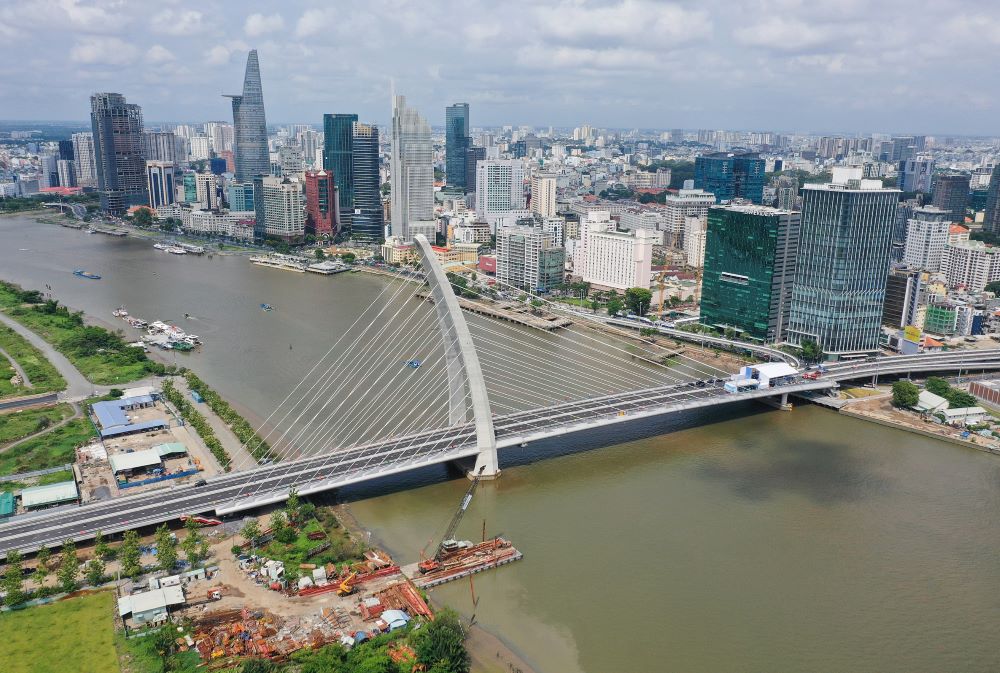
Ba Son Bridge, also known as Thu Thiem 2 Bridge, is a remarkable cable-stayed structure that gracefully spans the majestic Saigon River, establishing a vital link between the bustling District 1 and the dynamic Thu Duc City. The inception of construction for this architectural marvel dates back to the early months of 2015, and its anticipated inauguration is scheduled for the year 2022. Infused with unparalleled architectural brilliance and adorned with an exquisite lighting system, the bridge is poised to emerge as a prominent landmark along the Saigon River, captivating onlookers with its aesthetic allure.
The panoramic vistas from the bridge offer enchanting glimpses of iconic landmarks that define the cityscape, including the towering Landmark 81 building, the distinctive Bitexco building, and the picturesque Bach Dang wharf. This strategic vantage point allows visitors to immerse themselves in the rich tapestry of the city’s architectural and cultural heritage.
Nevertheless, it is imperative for visitors to exercise caution and refrain from halting their journey on the bridge solely for the purpose of capturing photographs. Such behavior not only disrupts the smooth flow of traffic but also carries the risk of incurring fines. Authorities have imposed penalties ranging from 400,000 to 600,000 VND for motorbike infractions, and 80,000 to 100,000 VND for bicycle violations. Therefore, to ensure both the safety of commuters and adherence to regulations, it is advised that visitors appreciate the splendor of Ba Son Bridge without compromising the efficiency of its transportation functions.
Jade Emperor Pagoda (Chùa Ngọc Hoàng):

Situated on Mai Thi Luu Street in District 1, the venerable Jade Emperor Pagoda, also known as Phuoc Hai Tu, is a sacred edifice dedicated to the worship of Kim Hoa Thanh Mau and the revered 12 midwives who have historically played a crucial role in facilitating childbirth. The construction of this spiritual haven spanned from the years 1892 to 1900, resulting in the creation of a monumental structure sprawling over an expansive area exceeding 2,000 square meters. Notably, the Jade Emperor Pagoda has gained widespread renown as a revered sanctuary, sought after for its auspicious qualities, fostering prosperity in business, promoting tranquility, and bestowing blessings upon its devotees. Of particular significance is its role as a haven for fervent prayers seeking the divine intervention for the well-being of children.
In a noteworthy historical transition, the pagoda underwent a nomenclatural alteration in 1984, adopting the name Phuoc Hai Tu. This transformation in nomenclature coincided with its formal recognition as a national architectural and artistic heritage in the auspicious year of 1994. Thus, the Phuoc Hai Tu stands as a testament to a rich tapestry of cultural and spiritual significance, weaving together a legacy that transcends temporal boundaries.
Thu Ngu Flagpole (Cột Cờ Thủ Ngữ):
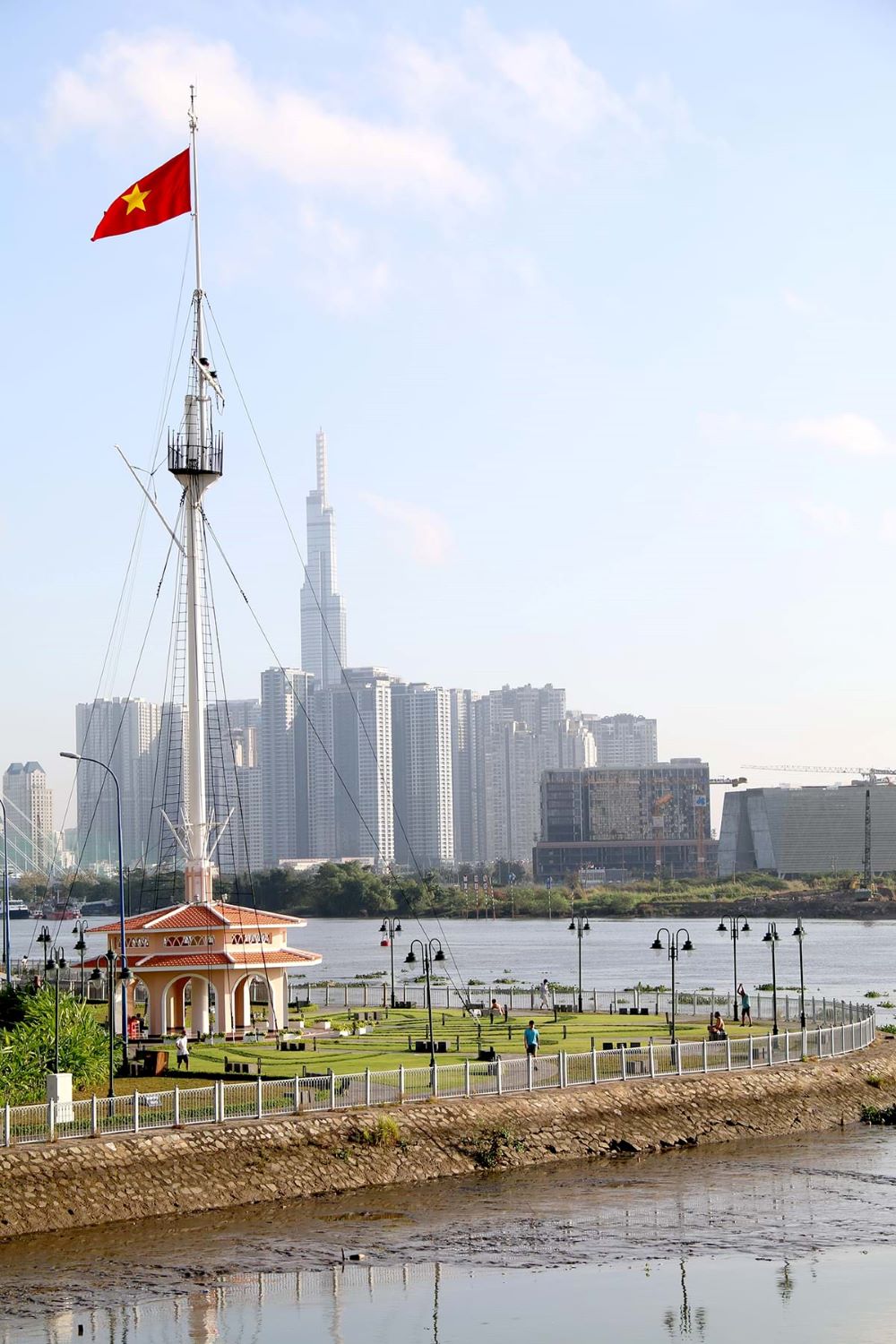
Situated on Ton Duc Thang street in Nguyen Thai Binh ward, district 1, the Thu Ngu Flagpole stands as a significant historical edifice. Originally constructed by the French in October 1865, this landmark was established on the former grounds of the royal mandarin’s palace, devoted to overseeing commerce for the Nguyen family. Initially serving as a signal post for vessels navigating the canals in the Saigon – Gia Dinh region, it has evolved over its 158-year existence.
Together with Nha Rong Wharf, Bach Dang Wharf, and Mong Bridge, the Thu Ngu Flagpole contributes to a distinctive historical and cultural complex, bearing witness to the urban development of Ho Chi Minh City. Undergoing transformations in both form and function, the flagpole underwent a significant restoration in 2011. The revitalization introduced a column architecture featuring an octagonal core block, a slanting roof, and a lower polygonal block with a sloping roof. The space beneath the flagpole now serves as a traditional house showcasing photographs of old Saigon.
In 2016, the project attained recognition as a city-level historical relic, solidifying its status. Further enhancements occurred in 2021, as the campus surrounding the Thu Ngu Flagpole, spanning over 3,000 square meters, underwent a transformation with lush grass and stylized lotus flower pavements. This ongoing evolution reflects the enduring historical and cultural significance of the Thu Ngu Flagpole in the vibrant tapestry of Ho Chi Minh City.
Nguyen Hue Walking Street (Phố Đi Bộ Nguyễn Huệ):
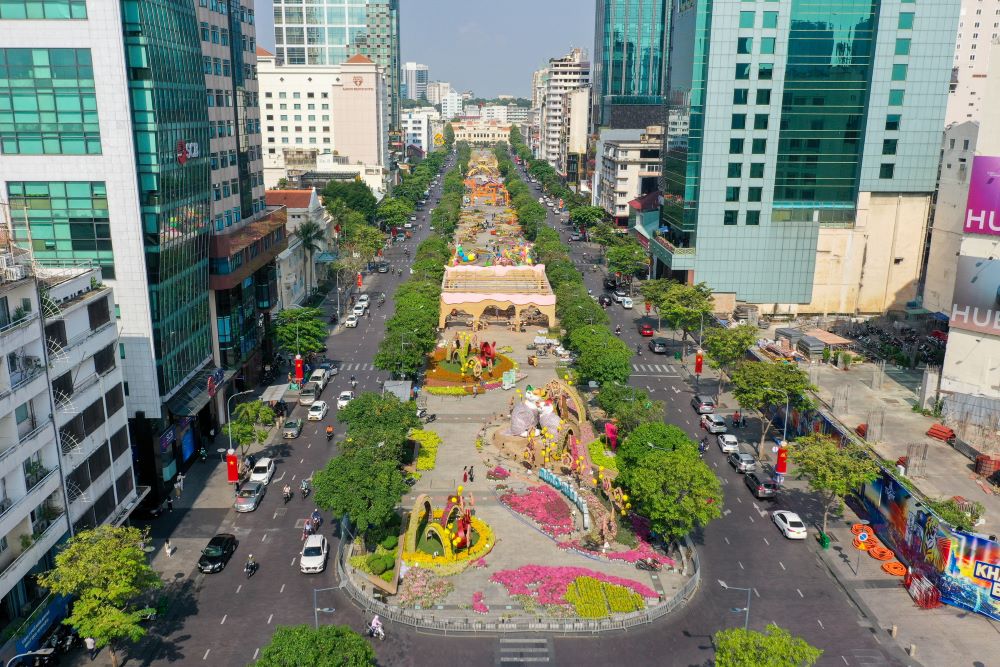
Stretching over 670 meters, Nguyen Hue Walking Street extends from the headquarters of Ho Chi Minh City People’s Committee to Bach Dang Park, traversing various streets including Le Loi, Ton That Dam, Ngo Duc Ke, and Hai Trieu. This vibrant thoroughfare serves as the focal point for significant cultural and artistic events within the city.
Nguyen Hue Walking Street is open throughout the day. On weekdays (Monday to Friday), vehicular traffic is permitted in the area. However, during the evenings of Saturdays and Sundays, the street transforms into a pedestrian haven, cordoning off vehicular access from 6:00 p.m. to 10:00 p.m., creating an expansive space for pedestrians.
Exploring this dynamic street, visitors can easily discover picturesque settings, including the front of the City People’s Committee headquarters, President Ho Chi Minh’s monument, the iconic 42 Nguyen Hue apartment building, and the charming facade of Ciao Cafe. These locations embody the essence of the walking street experience, making them must-visit spots, particularly for first-time visitors. As the walking street lacks substantial coverage or shade, it is advisable for visitors to bring hats or umbrellas, especially when arriving in the morning.
You may interest in Vietnam honeymoon vacation, click here!
Bach Dang Wharf – Saigon Waterbus (Bến Bạch Đằng):
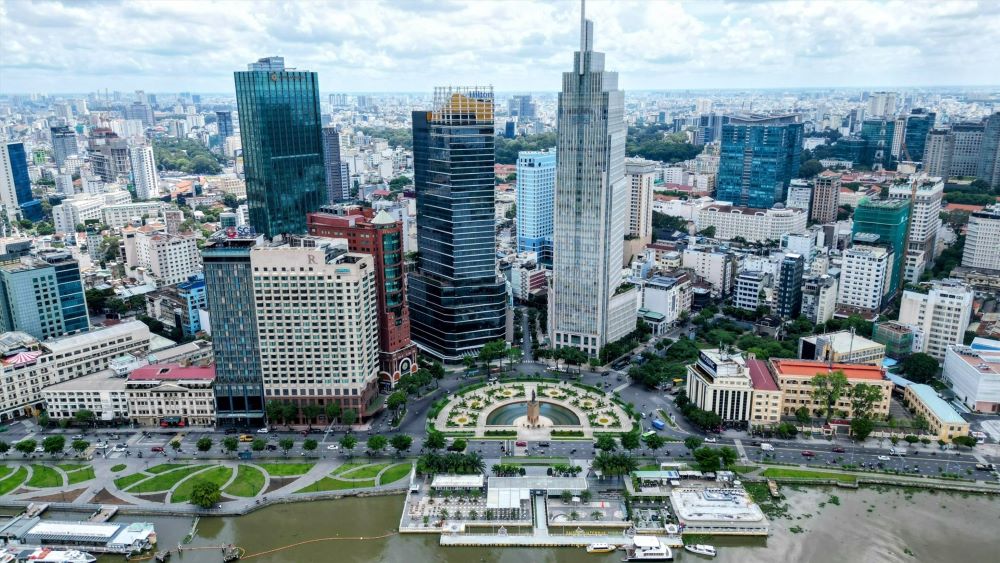
Bach Dang Wharf, situated prominently at 2 Ton Duc Thang Street, directly across from Nguyen Hue Walking Street, boasts a comprehensive area that seamlessly integrates both a wharf and a park. This expansive locale spans a remarkable 1.3 kilometers in length and spans an impressive 23,400 square meters in width. It serves as a vibrant hub where locals and tourists alike converge for recreational pursuits, reveling in festivities such as fireworks displays during holidays and the ushering in of the New Year. Additionally, it functions as a versatile space for various physical activities, including exercising, strolling, and cycling.
In the inaugural month of January 2022, Bach Dang Wharf Park celebrated its grand opening, marking the culmination of an extensive construction period exceeding six months. The park’s segment that runs parallel to Ton Duc Thang Street encompasses an expansive area of approximately 5,000 square meters. This meticulously designed space features meticulously laid-out walkways, verdant trees, and strategically positioned stone platforms that grace the paths. Adjacent to these pathways are lush lawns that provide a serene environment for individuals to pause, unwind, and rejuvenate. Complementing this tranquil ambiance is an advanced automatic lighting and watering system, enhancing the overall experience for park visitors.
Hao Si Phuong Alley (Hào Sĩ Phường):
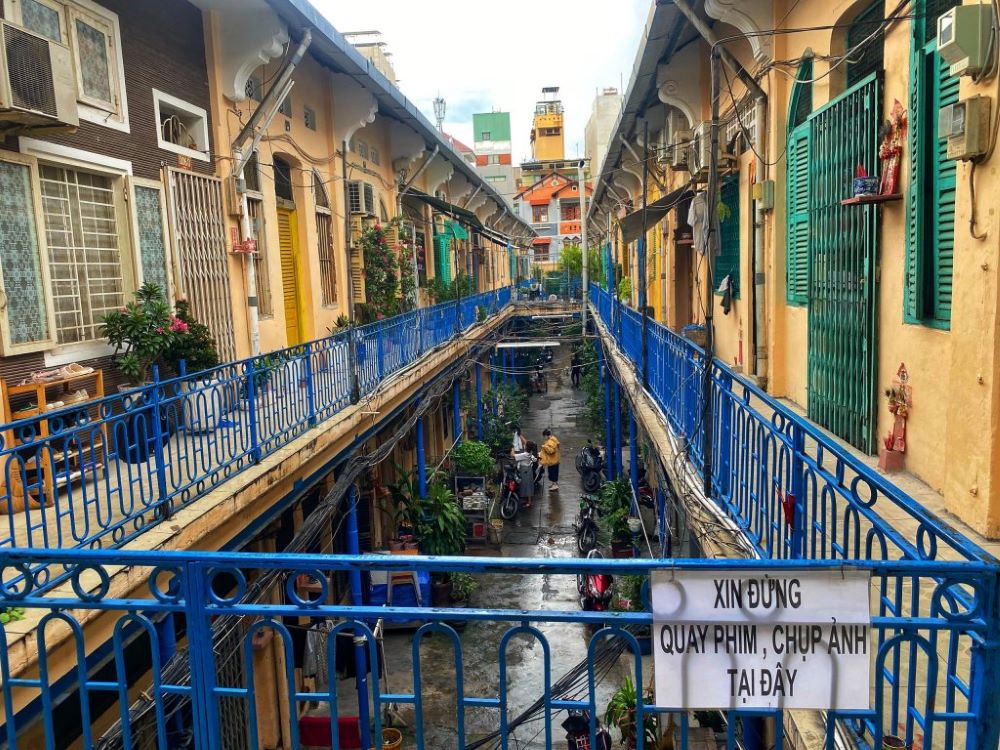
Hao Sy Phuong, situated at 206 Tran Hung Dao Street in District 5, is an inconspicuous alley with an easily missed entrance directly on the street. Passing through a dim area bordered by aged jade green walls is necessary to access the 100-meter-long alley, home to approximately 50 households. The architectural layout resembles apartments, featuring numerous small units on two floors interconnected by stairs. Two entrances connect the alley to the main road—Ngo Quyen and Tran Hung Dao.
This locale offers visitors a glimpse into the vibrant cultural traits of the Chinese community. Upon entry, iconic Chinese cultural elements like the Ngu Phuc Lam Mon image, Tho Dia altar, and Thien altar become immediately apparent.
Once a popular spot for tourists and film crews, the alley’s charm impacted the residents’ daily lives. In 2020, residents responded by posting signs prohibiting photography. Although these signs have since been removed, visitors are urged to explore respectfully, refraining from disturbance and seeking permission before capturing any photographs.
Turtle Lake (Hồ Con Rùa)
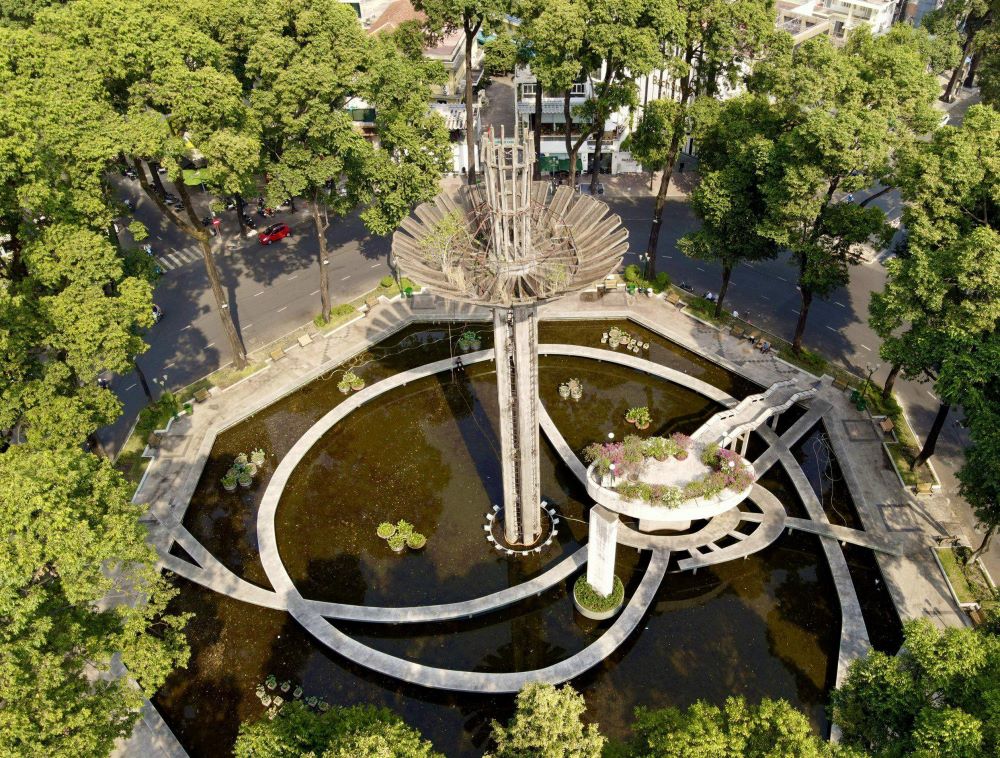
Turtle Lake, alternatively recognized as International Square, stands as a prominent landmark nestled strategically at the convergence point of three bustling thoroughfares in the heart of Saigon: Pham Ngoc Thach, Vo Van Tan, and Tran Cao Van. Renowned for its significance as a rendezvous and sightseeing haven, the lake attracts a diverse array of visitors, including both local youth and international tourists, emblematic of the cultural convergence and prosperity that define the essence of Saigon.
Situated at this vibrant intersection, Turtle Lake serves as a dynamic hub for social interactions, fostering a palpable sense of connection and community. Its popularity as a dating destination is mirrored by its allure as a picturesque locale for sightseeing, drawing in visitors eager to experience the unique atmosphere that encapsulates the spirit of Saigon.
Surrounding Turtle Lake, an array of cafes adds to the charm of the area, providing idyllic settings for patrons to unwind and soak in the bustling energy of the city. These cafes inclusing Cộng Cà phê, Highlands, The Coffee House… not only offer a delightful reprieve for locals and tourists alike but also serve as cultural hubs where the pulse of Saigon’s vitality can be felt.
Le Minh Xuan Incense Making Village (Làng Lê Minh Xuân)
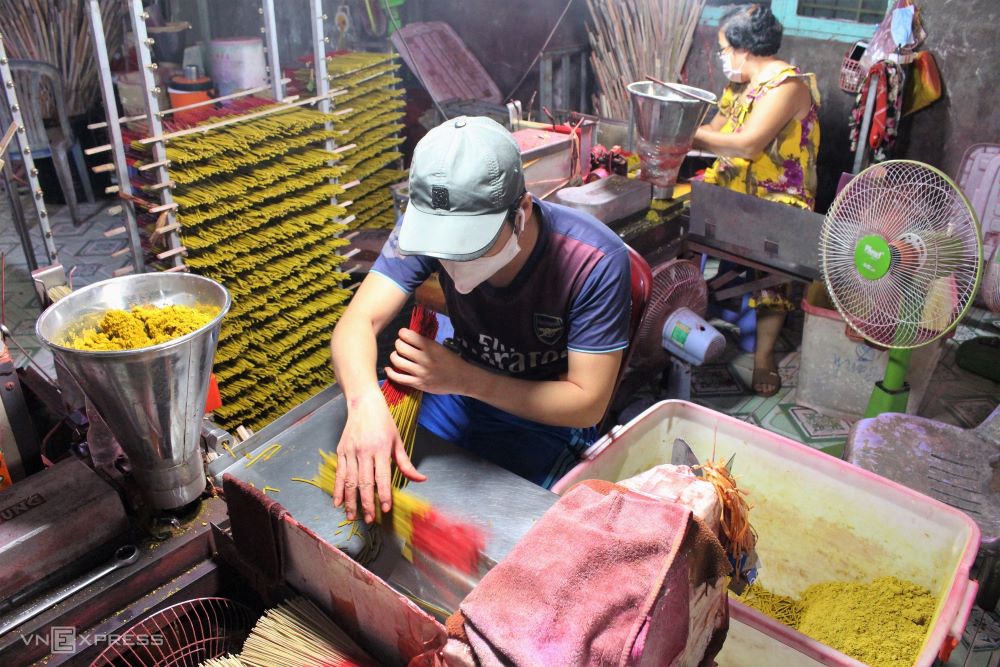
Delve into the cultural heritage of incense making at Le Minh Xuan village, where traditional methods have been passed down through generations. The village is characterized by rows of small houses where families continue the age-old craft of handcrafting incense.
For daily visit, morning hours provide an opportunity to witness the artisans at work and learn about the intricate process of incense making.
Esspecially before yearly Tet holiday, the Le Minh Xuan incense village in Binh Chanh district comes alive with a flurry of orders and draws in tourists eager to capture memorable moments through photographs. Those exploring the village can witness the intricate steps involved in crafting a completed incense stick. This includes the meticulous process of blending powders, incorporating fragrances like agarwood, cajuput powder, and cinnamon powder, followed by the various stages of drying, refining, and packaging the incense.
Ho Chi Minh City People’s Committee (UBND TP Hồ Chí Minh)
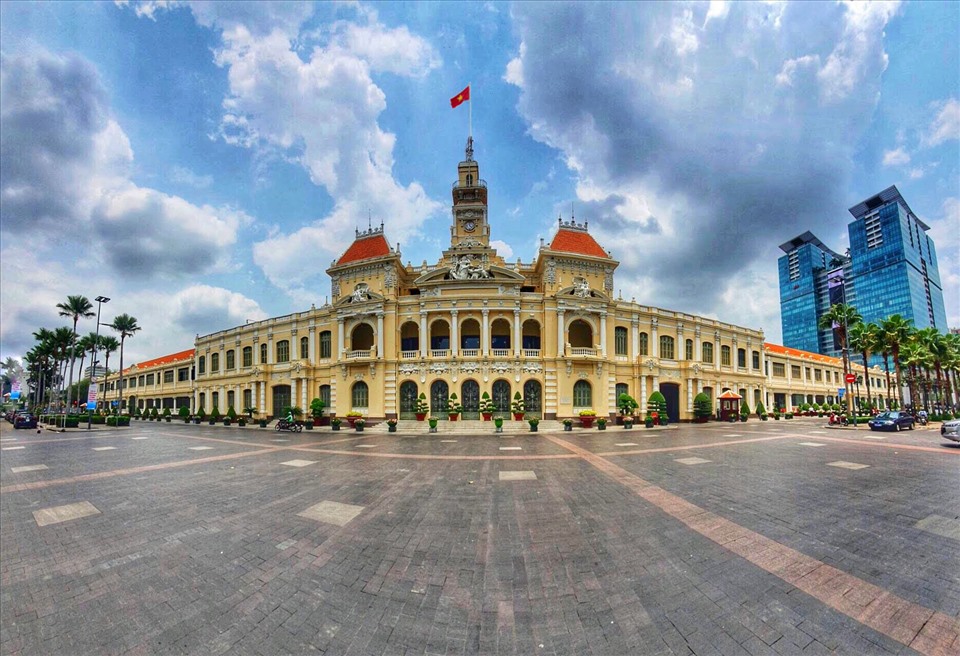
History: Construction of the Ho Chi Minh City People’s Council and People’s Committee headquarters spanned two decades, commencing in 1889 and concluding in 1909. Architect Femand Gardès orchestrated the design, drawing inspiration from the bell towers in northern France. The exterior architectural embellishments were crafted under the artistic direction of sculptor Louis-Lucien Ruffier. These government buildings stand as architectural landmarks, representing the city’s governance and administration.
Landscapes: Marvel at the grandeur of the People’s Council Headquarters and the elegant design of the People’s Committee building. The surrounding area is often bustling with civic activities.
Best Time to Go: Weekdays during office hours offer the chance to observe the government buildings in action and appreciate their significance.
Things to Do: Take a guided tour of the exterior, learn about the functions of the government buildings, and explore the surrounding civic spaces.
Conclusion for 10 Exciting Spots in HCM City 2024 Updates:
Ho Chi Minh City beckons travelers with a rich tapestry of history, culture, and modernity. These 10 exciting check-in spots in HCM City offer a glimpse into the city’s soul, inviting you to explore its diverse landscapes, delve into its history, and connect with its vibrant communities. As you traverse these iconic locations, you’ll discover the heart and spirit of Ho Chi Minh City, leaving you with lasting memories of this dynamic and captivating destination.
People read also:
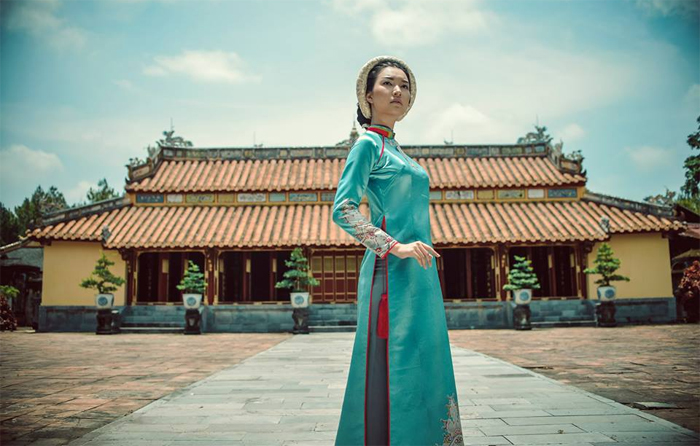
Sharing on honeymoon destination and activities in Vietnam
